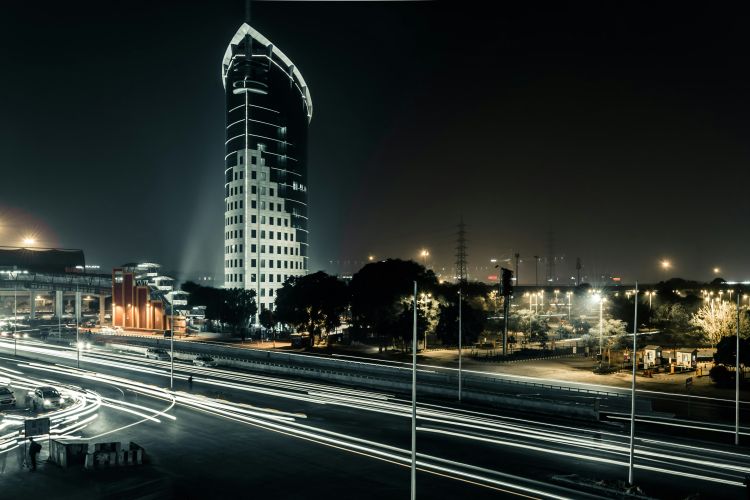
India’s residential real estate market is gaining momentum, with average home prices rising by 10% in the January-March quarter of 2024 compared with the same period the previous year. Average home prices in India’s top eight cities have surged significantly, with Bengaluru leading the way, according to data from the CREDAI-Colliers-Liases Foras Housing Price-Tracker report. Average prices in the city increased to Rs 10,337 per sq ft from Rs 8,748 per sq ft in the same quarter last year.
The surge in residential property prices signifies a growing market fuelled by strong demand. This demand is further amplified by the development of new micro-markets with improved infrastructure, contributing to a tighter supply-demand dynamic. Additional factors, such as a growing appetite for luxury projects, upcoming infrastructure initiatives, and strategically chosen locations, are also driving prices upward. In response, developers are increasingly focusing on the high-end segment, crafting premium projects tailored to the evolving preferences of discerning buyers.
READ | Overseas funds: Indian investors go global as RBI eases norms
India’s residential real estate market serves as a bellwether for the country’s economic prosperity. A robust real estate sector stimulates various ancillary industries, from construction and raw materials to banking and finance. As home prices rise and demand increases, these interconnected sectors experience growth, creating a ripple effect that boosts employment and contributes to GDP growth. The real estate market thus acts as a critical engine driving economic development.
The strong performance of the real estate sector is also indicative of rising disposable incomes and an expanding middle class. As more individuals and families achieve financial stability, their investment in residential properties increases, signalling confidence in long-term economic prospects. This trend is particularly evident in urban areas, where the burgeoning tech industry and a surge in entrepreneurial ventures have significantly raised income levels.
India’s real estate market has reported an average increase of 10-12% per annum over the last decade, according to data from the National Housing Bank. This growth has outpaced both inflation and income growth. Supported by a stable lending environment and emerging micro-markets, it is expected that the real estate market will continue to flourish in FY24 and FY25.
Industry insiders are also witnessing increased demand for ultra-luxury housing in India. With the demand for properties priced above Rs 20 crore rising, developers are moving away from traditional marketing methods to sell these properties and are shifting towards ultra-customisation. This includes meticulous profiling of customers before showing them the property, using augmented reality for interior decor visualisation, offering virtual tours, and hosting exclusive international shows.
What is fuelling demand
India’s ultra-luxury housing market is booming due to a specific set of wealthy buyers. This includes old money where second and third generations are buying homes, successful C-suite executives, and entrepreneurs from booming sectors like tech startups.
Real estate firms are leveraging wealth managers to connect with these high-net-worth individuals (HNIs) and Non-Resident Indians who view Indian luxury properties as attractive investments, particularly given the current dismal state of global markets. Developers are also employing targeted marketing tactics like exclusive events and overseas property shows to reach this international clientele.
Future of residential real estate
There is an increasing demand for localities offering green spaces and favourable living conditions, a trend expected to gain momentum in the near future. With changing lifestyle preferences, homebuyers are seeking projects with more living space, which may not be entirely possible in city centres. This indicates a potential shift towards decentralised growth models in future urban development. In the coming years, instead of having one giant city, there might be a cluster of smaller towns or communities around a central hub, which will be beneficial considering how overwhelmed Indian cities like Bangalore and Delhi are.
India’s residential real estate market is witnessing a significant turning point in its evolution. The upward trend not only suggests potential for property prices to keep pace with inflation but also offers hope for improved affordability in the future.
As India’s real estate market has undergone rapid price rises, some analysts are wary of its future potential and have raised concerns about a possible bubble. Comparing India’s real estate market to countries like the United States, China, and Japan, which have experienced bubbles in the past, these experts believe that India might be witnessing the same due to rapid price appreciation, unsustainable lending practices, and speculative investments. However, it is worth noting that India’s urbanisation is still in its early stages, and the demand for residential properties is genuine.
Even if prices plateau, a major crash is unlikely due to strong economic fundamentals and rising incomes. Others consider the Indian real estate market underrated with incredible growth opportunities. Moreover, as the population grows, limited supply will also drive prices upwards, making it a lucrative investment option. All of this indicates that there are more reasons to remain bullish on the real estate market.
